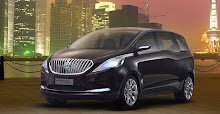
The Q3 will be the third model in the Q series belonging to Audi, following the Q7 - recently facelifted and presented at the Shanghai Auto Show - currently manufactured in Bratislava, Slovakia, and the Q5 launched last year and produced in Ingolstadt, Germany.
Audi Q3 production site will be the SEAT site in Martorell, Spain. Manufacture will begin in 2011 with an annual production capacity of up to 80,000 units. The total investment will amount to around €300 million.
“Following in-depth consideration of all relevant factors and an extensive international comparison of various sites, we selected Martorell,” explained Rupert Stadler, Chairman of the Board of Management at AUDI AG. This decision enables Audi to continue its strategy of growth and internationalization. Mr. Stadler added: “We are counting on this Spanish site’s efficiency, the excellent quality of the Production department, and its highly trained staff. We will use the Group’s synergies to sharpen our competitive edge and help protect around 1,200 jobs. The decision furthermore safeguards workplaces at other Audi locations.”
Having agreed that the Q3 will be manufactured in Spain, a decision about production in the USA has been postponed. Mr. Stadler: “We will systematically explore our options in the context of the current market crisis. Audi is in a good position. There is currently no urgent need to select additional sites.”
Q3 will be a coupé-like five-door SUV with characteristic of a typical SUV. According to Audi, the Audi Q3 will stand out thanks to a supremely sporty driving experience.
Audi Q3 production site will be the SEAT site in Martorell, Spain. Manufacture will begin in 2011 with an annual production capacity of up to 80,000 units. The total investment will amount to around €300 million.
“Following in-depth consideration of all relevant factors and an extensive international comparison of various sites, we selected Martorell,” explained Rupert Stadler, Chairman of the Board of Management at AUDI AG. This decision enables Audi to continue its strategy of growth and internationalization. Mr. Stadler added: “We are counting on this Spanish site’s efficiency, the excellent quality of the Production department, and its highly trained staff. We will use the Group’s synergies to sharpen our competitive edge and help protect around 1,200 jobs. The decision furthermore safeguards workplaces at other Audi locations.”
Having agreed that the Q3 will be manufactured in Spain, a decision about production in the USA has been postponed. Mr. Stadler: “We will systematically explore our options in the context of the current market crisis. Audi is in a good position. There is currently no urgent need to select additional sites.”
Q3 will be a coupé-like five-door SUV with characteristic of a typical SUV. According to Audi, the Audi Q3 will stand out thanks to a supremely sporty driving experience.































